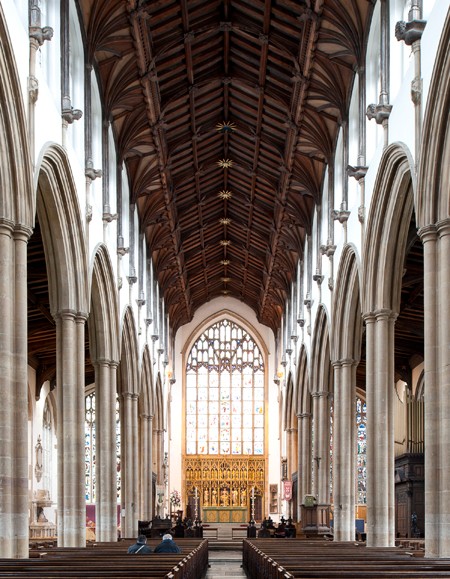Parish churches featuring integrated interiors—architectural envelopes lacking any structural division between nave and chancel—were among the most distinctive of the thousands of parish churches built or rebuilt in the so-called Perpendicular style of Gothic architecture in late medieval England. Indeed, at the time of their construction, these buildings were nothing less than revolutionary insofar as their open configurations upended centuries-old conventions of church planning by obscuring the programmatic division of lay space and clerical space. Historians of art and architecture, in evaluating structures of this type, have been quick to praise their homogeneity as architectural ensembles but slow to parse their heterogeneity as composite spatial enclosures and conglomerate social enterprises. My dissertation, in contrast, investigates the repercussions of this productive tension between
My dissertation opens by reassessing two common art-historical narratives concerning the origins of integrated design in the parish church architecture of later medieval Europe. The first, proposed with respect to the hall-like parish churches of late medieval England by the architectural historian Sir Alfred Clapham (1883–1950), frames integrated design in terms of efficient spatial coordination (as the work of master masons). The second, proposed with respect to the hall-style parish churches of late medieval Germany by the art historian Kurt Gerstenberg (1886–1968), frames integrated design in terms of effective social collaboration (as the work of lay patrons). These two narratives, though more than a century old, continue to shape contemporary research on the architecture of medieval Britain—not least because they occupy a central place in the work of the prolific architectural historian Sir Nikolaus Pevsner (1902–1983). I argue, however, that both are lamentably reductive in the sense that they treat the buildings in question as products of determinative cultural processes that foreshadow, respectively, the spatiality of the Renaissance and the sociality of the Reformation. I
My dissertation then proceeds to explore the implication of this approach with respect to three parish churches featuring integrated interiors in the largest, wealthiest, and most architecturally dynamic settlement in late medieval East Anglia: the cathedral city of Norwich. Each building, I contend, corresponds to an important period in the development of the integrated interior. St. Gregory Pottergate (c. 1394–c. 1401), a five-bay structure designed by the cathedral-based mason Robert Wodehirst (active 1351–1401), belongs to
In sum, by analyzing the integrated design of a select number of parish churches erected in late medieval Britain, my project achieves two ends. First, it clarifies the history of the buildings themselves, thereby augmenting current scholarship on urban life in medieval Norwich, on devotional practice in pre-Reformation East Anglia, and on the evolution of the Perpendicular style in late medieval England. Second, by combining older positivist methods and newer theoretical models, it contributes to ever-expanding interdisciplinary research concerning the instrumentality of buildings, cities, and landscapes.
